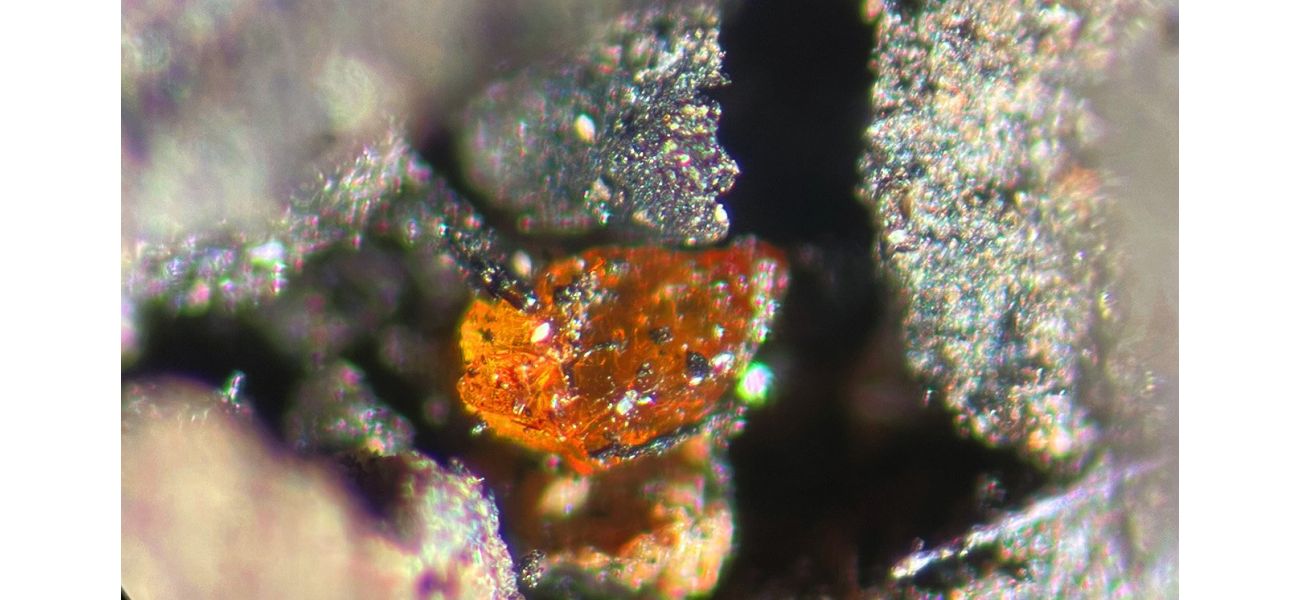Ancient discovery solves enigma of Antarctica after 90 million years.
The finding of fossilized plant "blood" reveals the prehistoric life on the continent before it was frozen over.
November 15th 2024.

For the first time in history, a remarkable discovery has been made on the Antarctic continent. The finding of amber, a fossilized tree resin, has provided strong evidence that lush rainforests once flourished in the area near the South Pole. This groundbreaking discovery was made by a team of German geologists in 2017, when they recovered samples of mud from the seafloor near the outer edges of Antarctica's landmass.
Led by Dr. Johann P. Klages from the Alfred Wegener Institute in Bremerhaven, the team was able to gain direct insights into the environmental conditions that existed in West Antarctica approximately 90 million years ago. Their previous findings of microscopic fossils and evidence of plant life in the area suggested a rich and diverse ecosystem. However, the discovery of amber was a revelation, as it had never been found on the Antarctic continent before.
This discovery has shed light on the ancient rainforest environment that once thrived near the South Pole. The amber fragments found near the Pine Island glacier indicate a swampy temperate rainforest dominated by conifers. These nuggets also reveal surprising details about the forest, such as evidence of parasites and forest fires. The researchers believe that further analysis of the amber could potentially uncover even more information about the forest ecosystem, including the possibility of finding traces of life preserved within the resin.
One of the most intriguing aspects of this discovery is the suggestion that the forest may have met its end by being submerged in high waters. This theory aligns with the team's previous findings of a layer of mudstone and plant roots, indicating a sudden and catastrophic event. Dr. Klages expressed excitement at the idea that all seven continents once had the right conditions for resin-producing trees to thrive. This discovery has opened a new window into the past, allowing researchers to gain a more direct understanding of the ancient forest ecosystem.
Further analysis will be carried out to confirm the presence of tree bark inside the amber fragments and what this could mean for our understanding of Antarctica's ancient forests. The potential for extremely well-preserved remnants of the forest within the amber is a tantalizing prospect for scientists. This discovery has provided a rare opportunity to take a journey back in time and gain a deeper understanding of our planet's history.
Led by Dr. Johann P. Klages from the Alfred Wegener Institute in Bremerhaven, the team was able to gain direct insights into the environmental conditions that existed in West Antarctica approximately 90 million years ago. Their previous findings of microscopic fossils and evidence of plant life in the area suggested a rich and diverse ecosystem. However, the discovery of amber was a revelation, as it had never been found on the Antarctic continent before.
This discovery has shed light on the ancient rainforest environment that once thrived near the South Pole. The amber fragments found near the Pine Island glacier indicate a swampy temperate rainforest dominated by conifers. These nuggets also reveal surprising details about the forest, such as evidence of parasites and forest fires. The researchers believe that further analysis of the amber could potentially uncover even more information about the forest ecosystem, including the possibility of finding traces of life preserved within the resin.
One of the most intriguing aspects of this discovery is the suggestion that the forest may have met its end by being submerged in high waters. This theory aligns with the team's previous findings of a layer of mudstone and plant roots, indicating a sudden and catastrophic event. Dr. Klages expressed excitement at the idea that all seven continents once had the right conditions for resin-producing trees to thrive. This discovery has opened a new window into the past, allowing researchers to gain a more direct understanding of the ancient forest ecosystem.
Further analysis will be carried out to confirm the presence of tree bark inside the amber fragments and what this could mean for our understanding of Antarctica's ancient forests. The potential for extremely well-preserved remnants of the forest within the amber is a tantalizing prospect for scientists. This discovery has provided a rare opportunity to take a journey back in time and gain a deeper understanding of our planet's history.
[This article has been trending online recently and has been generated with AI. Your feed is customized.]
[Generative AI is experimental.]
0
0
Submit Comment





